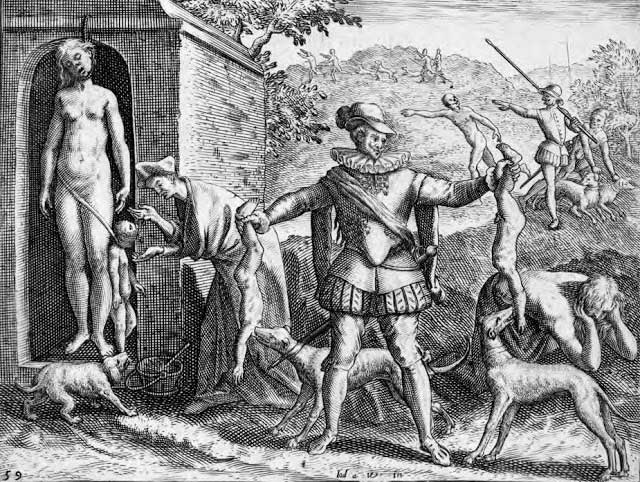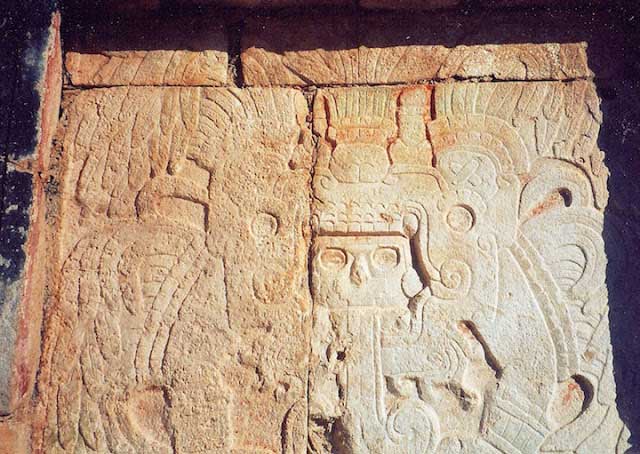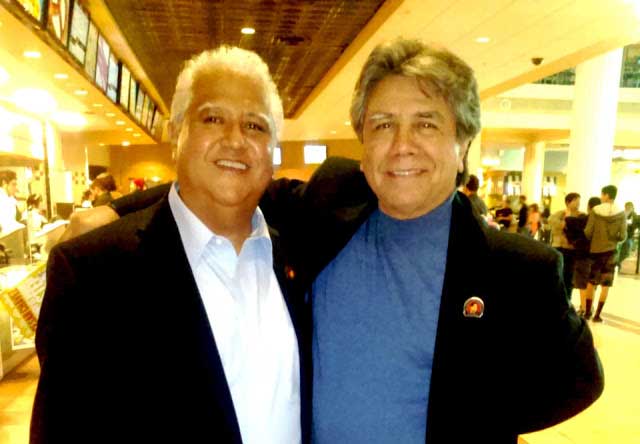I had the privilege to work with Julio César Guerrero during the National US tour of the Caravana 43 of the Ayotzinapa students and parents, who divided their caravana into three segments: the west, the central — where I met him — and the east branch. All then met again in Washington DC and New York City. Julio César took months to brilliantly orchestrate their entire trip, and he did so with passion and gusto.
Today, he offers some recollections of a different topic, but nevertheless these are fascinating to language lovers and history buffs. Soon too, he will fill us in with the back story of the months of planning for the Caravana43, since many of you have already read varied newstories of Ayotzinapa, though they keep on happening.
I joined Michigan State University In the fall of 2003 as an advisor with the “Office of Cultural and Academic Transitions” under the student services division. OCAT was essentially one of the many benefits produced during the Civil Rights movement in the area of higher education, established for the purpose of not only increasing the number of minority students into universities but also, most importantly, of developing and nurturing a culturally sensitive environment on campus, since it fostered a drop-out prevention component.
My first week at work my supervisor told me, as a welcoming gesture, that he was glad I had joined the staff because Chicanos on campus, although not the largest minority, were the student group responsible for most of the political activism and organizing or — in his own words — the ones who “made the most noise.” By coincidence, that same week I was visited by a student member of MEChA who asked me for money to pay for an overnight delivery to the National MEChA Association board. As I understood, he needed to make the deadline for an appeal because the original membership application had been rejected.

I had problems understanding why a MEChA application would be rejected, particularly the application from the MSU MEChA organization, being that in my supervisor’s impression, they lived up to the image of an advocate student organization of the Raza, characteristic of all MEChA’s ideologies. The reason the board gave for the rejection, however, was merely based on semantics; it was not opposed to any membership regulations’ compliance. Specifically, the student explained, their application had been rejected because they had substituted the Ch for the X on the organization’s name, as in MEXA. The reason for altering the name, he further explained, was based on the Nahuatl language use of the X as in Mexica, which carries a Ch sound, as a tribute to our indigenous heritage.
This incident reminded me of conversations I used to have with Domingo Nick Reyes, one of my mentors, about how the Ch sound as part of our regular vocabulary has a chauvinistic effect in relation to class identity. Furthermore, there is an inherent hegemony derived from our colonized mentality to favor European over Indigenous identity symbols. The premise is that in an identity continuum the lower the class, the closer the identification with the Ch sound and, just the same, the closer the identification with European or Anglo references, the farther the relationship with the Ch sound. A parallel comparison can be made with the divide between the Chicano and the Hispanic identity.
It is important to note that the Ch sound is a constant in the Nahuatl language, which filters into the Spanish vernacular in common words such as cochino, cuchillo, chicle, huarache, chile, etc.
From an empiric perspective, it would be interesting to identify people’s reaction to the Ch as an auditory class symbol, just like the MEChA national board reacted to our students’ application and, by the same token, how we tend to react to ethnic-explicit, sexually-offensive, visual symbols or bitter tasting flavors.
I wonder if the findings may show enough evidence to compare the demonizing of the Ch sound with theBlack Legend.

For one, such probing would shed light on watered-down behavioral tendencies. I remember Domingo pointed out to the way people in some parts of Arizona and New Mexico — or the Hispano territory, as he called it — pronounced Sheecanos instead of using the strong Ch sound for Chicanos. Moreover, I always found it curious when some people referred to the Afro hairstyle as Natural or Fro’.
The instinctive rejection or distancing by some Raza from the Ch sound may be illustrated, if not justified, by its grammatical transition from our indigenous tongue to present era Español. For instance, the Chsound and its relationship with the Chicano experience in our Spanglish lingo is evident in the use of labels such as Chicano, Cholo, Pocho, Gabacho (White), Tiracho (Black), Totacha (English), Chale(negative), guariche (watered-down coffee), Churcha (church) or Chante (home).
On lingo from the Mexican side of the border, the use of the Ch sound is a constant in pejorative adjectives such as Chole and Chona (female nick names), carcacha (car), rascuache (low down),cachonda (sexy), chaparro (shorty), and more. Needless to say that every Mexican swear-word carries the Ch sound too; some illustrative words are chingar, pinche, gacho, and to that extent, obscene references to every private part of our anatomy and human waste.
Back in the late 70’s comedian George Carlin affected national policy when the Federal Communications Commission issued a ruling prohibiting the use of the “seven dirty words,” one of them being the F word during daytime broadcasts. People complained about the use of obscenities in his comedy routine.
Carlin’s defense was that the F word implied an action of love. I wonder then if we can claim the X sound as a sign of cultural pride.

About the Author
Julio César Guerrero earned a Master’s degree in both social work and telecommunications at theUniversity of Michigan. He spent many years teaching in the Michigan University system, where he developed ample experience in student services, classroom teaching, community organization and development, social and human services, nonprofit and human services administration, community and media relations, diversity training, outreach, and recruitment.
As a pioneer in bilingual community radio, he participated in the development of KDNA and Radio Cadena National News in Washington State, KUFW-Radio Campesina for Cesar Chavez and the United Farm Workers in California, and KRZA-Radio Raza in Colorado. He also worked as a program director and producer for KPFT Pacifica Radio in Houston, KBBF in California, KUAT in Arizona, and WKARin Michigan.
Under the role of community organizer, he participated in several educational events with union workers and human rights activists throughout the Midwest and Mexico, coordinated tri-national conferences for education and telecommunication workers from Canada, US, Mexico, and France, and coordinated some of the largest Latino workers’ leadership conferences for the Institute of Labor and Industrial Relations at the University of Michigan.
Most recently, Julio César Guerrero worked nonstop as the national coordinator for Caravana43, an international support network for the Ayotzinapa families of the 43 forcefully disappeared students in Guerrero, Mexico, when they made their tour through the United States.

Leave a Reply